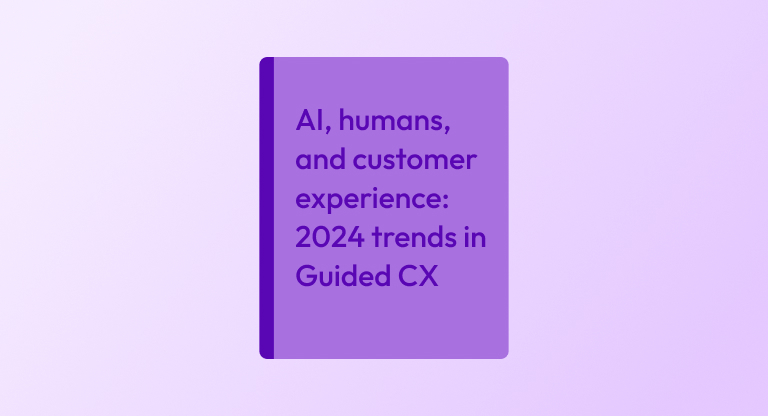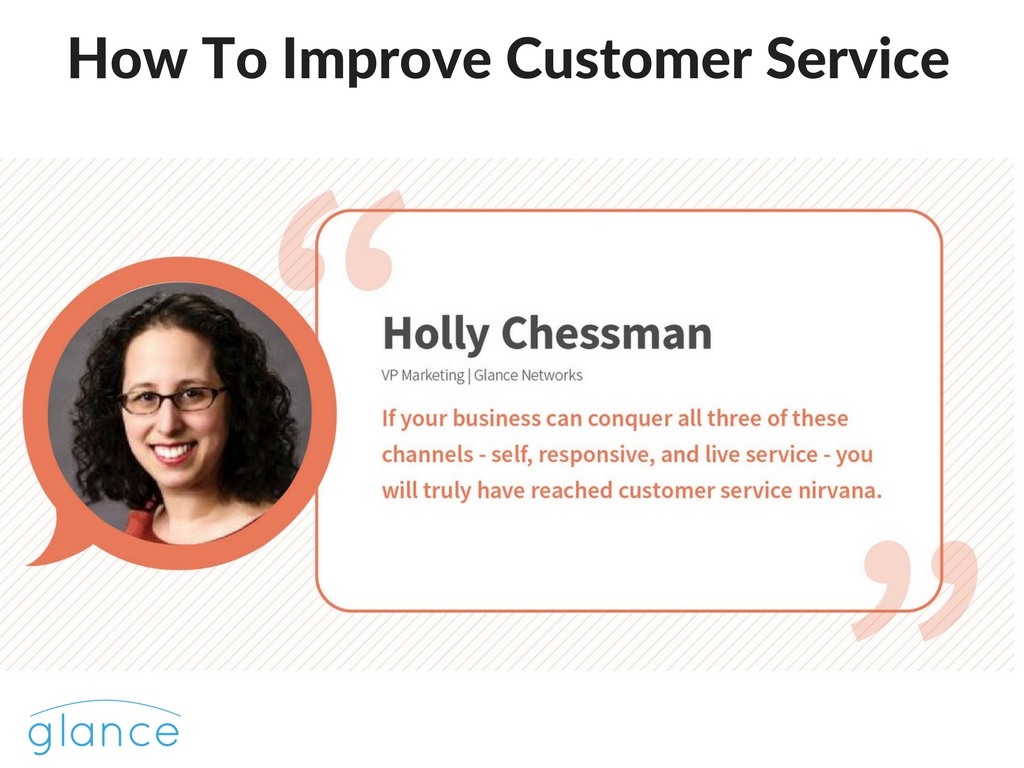Nowadays, satisfying your customers is about providing more than just a great product or service. It’s about providing a great end-to-end customer experience (CX) – including outstanding customer service, courtesy of your website, app, and contact center.
To ensure your customer satisfaction levels are as elevated as possible, you need to think carefully about how you manage your customer service.
Here are 8 customer service management recommendations that should help you do that – and keep your customers, reps, bosses, and shareholders smiling.
Provide self-service options
Increasingly, customers expect to be able to solve simpler issues themselves, without any hand-holding. They certainly won’t thank you if they have to call up to do something they could do themselves (if only you’d provided a FAQ for them).
Helping customers help themselves will also free your service reps up to devote time and energy to the more complex inquiries they can really bring value to.
Give customers the channels they need to speak to you
When self-service fails, you want to make it easy for customers to get in touch with you – however they want to, whenever they want to. You also want to make it easy for your service reps to meet customers wherever they are, be that on your website or your app.
So, provide omnichannel customer support, including phone, live chat, SMS, email, and social media – and think about tools that will help your reps join your customers and share in their experience. (Any guesses as to what we could be referring to here?)
Focus on raising employee satisfaction, too
While it’s clearly far too simplistic to assert that “happy reps = happy customers” (customers are often unhappy about things that are outside of your reps’ control, after all), unhappy reps certainly aren’t primed to do your customer satisfaction levels any favors.
What they are primed to do is – churn. And that’s more bad news for your CX, which flourishes when agents are experienced and withers a little when they aren’t.
Therefore, make sure to frequently check that your reps are happy and fulfilled – and motivate them with recognition, rewards, and clear paths for career progression.
Give your service reps the right tools for their job
You’ll do wonders for both employee and customer satisfaction levels if you give your reps the training and technology they need to help customers as efficiently and empathetically as possible.
Training them in soft skills will equip them to have friendlier, less tense, and more productive interactions with customers.
But expressions of empathy aren’t quite enough. As this blog explains, tools that enable them to connect and collaborate with customers to solve issues together will enable reps to turn nice words into effective actions.
Measure customer service against the right metrics
Setting appropriate KPIs for your contact center – as well as necessary for measuring success – is also instrumental in motivating and managing your reps.
So once you’ve defined appropriate KPIs, let your reps know about them. They should know which goals they’re working towards – and why those goals are worthwhile.
As to what the appropriate KPIs actually are, it might not be as obvious as it first seems. Sure, you might think efficiency metrics are most important, but measuring service reps against these can cause burnout – and might prove to be counterproductive, anyway. (The speediest call isn’t always the most successful call, right?)
For advice on using the most commonly used contact center metrics, check out our articles on Average Handling Time (AHT) and First Call Resolution (FCR).
Speak to reps and listen to customers for true insight into your customer service experience
Metrics can tell you useful things about how good your customer service is, but they don’t tell you everything. They certainly don’t capture every aspect of your customers’ real experiences – and you need to know about those experiences.
Particularly when they go wrong. No matter how painful it is to receive a complaint from a customer, each and every one should be seen as an opportunity to improve your CX (and as a chance for your reps to turn an angry customer into a grateful, loyal customer).
As a customer service leader, you need to keep your ear to the ground and know what customers are unhappy about. That way, you’ll be able to take accountability for customer service issues at management level – and stop them from reoccurring.
Do that by listening to notable customer interactions wherever possible – and talk to your reps for the anecdotal lowdown on calls that won’t show up in your KPIs.
Champion CX as an organizational priority (if it isn’t already)
For those working outside customer service, marketing and sales, CX might not be an obvious priority. It needs to be. For everybody.
If it isn’t (and sorry to go all Captain Picard on you): make it so.
Once everybody is aligned on prioritizing CX, your CX will necessarily improve – not least because people across your business will now have a powerful incentive for helping reps on the frontline resolve customer issues ASAP.
For some pointers on differentiating your customer experience (and communicating the value of customer centricity), check out this blog.
Look for opportunities to transform your contact center into a revenue center
Thanks, in part, to the COVID-accelerated closure of physical stores, the contact center is increasingly the place where a business meets its customers.
That’s one reason why its role is evolving from providing reactive support to proactively generating revenue through customer engagement.
Empower your reps to come up with revenue-boosting ideas that will strengthen the contact center’s position within the business – and demonstrate the value of customer centricity to the whole organization. (Thereby giving customer satisfaction a shot in the arm.)
And don’t forget: customer satisfaction in itself creates revenue-generating opportunities for reps – who can capitalize on the goodwill generated by a great interaction to up/cross-sell happy customers. (See the case study just below.)
Guided CX: the secret sauce for a higher CSAT …
This list shows that optimizing your customer service for customer satisfaction calls for a combination of good strategy, good management, good training, and good tech.
But while no technology is going to do it all for you, giving your service (and sales) reps a tool that they can use to connect with customers for collaborative interactions will go a long way to raising your CSAT scores.
Time and again, we’ve seen our technology help raise CSAT and NPS levels in the contact centers of our customers (and beyond).
Take email marketing solution company Constant Contact, for example. Not only are their support agents driving higher CSAT (and First Call Resolution) with Glance, but they’re also capitalizing on high CSAT moments to cross and up-sell related products and services. You can read all about it here.
If you’d like to dive into how our Guided CX solutions help service reps (and sales reps) satisfy more customers and feel great about their jobs, head to our Experience the Solutions webpage for the full lowdown. To get a deeper dive on Guided CX, check out our ebook, Solving CX’s Human Connection Gap.
SaveSave
SaveSave
SaveSave
SaveSave
SaveSave
SaveSave
Every business wants satisfied customers. There are plenty of studies out there showing that satisfied customers spend more with the businesses that satisfy them – but honestly, who needs a study to tell them that? Happy customers come back. Unhappy customers storm out.
s
Every business wants satisfied customers. There are plenty of studies out there showing that satisfied customers spend more with the businesses that satisfy them – but honestly, who needs a study to tell them that? Happy customers come back. Unhappy customers storm out.
Nowadays, satisfying your customers is about providing more than just a great product or service. It’s about providing a great end-to-end customer experience (CX) – including outstanding customer service, courtesy of your website, app, and contact center.
To ensure your customer satisfaction levels are as elevated as possible, you need to think carefully about how you manage your customer service.
Here are 8 customer service management recommendations that should help you do that – and keep your customers, reps, bosses, and shareholders smiling.
Provide self-service options
Increasingly, customers expect to be able to solve simpler issues themselves, without any hand-holding. They certainly won’t thank you if they have to call up to do something they could do themselves (if only you’d provided a FAQ for them).
Helping customers help themselves will also free your service reps up to devote time and energy to the more complex inquiries they can really bring value to.
Give customers the channels they need to speak to you
When self-service fails, you want to make it easy for customers to get in touch with you – however they want to, whenever they want to. You also want to make it easy for your service reps to meet customers wherever they are, be that on your website or your app.
So, provide omnichannel customer support, including phone, live chat, SMS, email, and social media – and think about tools that will help your reps join your customers and share in their experience. (Any guesses as to what we could be referring to here?)
Focus on raising employee satisfaction, too
While it’s clearly far too simplistic to assert that “happy reps = happy customers” (customers are often unhappy about things that are outside of your reps’ control, after all), unhappy reps certainly aren’t primed to do your customer satisfaction levels any favors.
What they are primed to do is churn. And that’s more bad news for your CX, which flourishes when agents are experienced and withers a little when they aren’t.
Therefore, make sure to frequently check that your reps are happy and fulfilled – and motivate them with recognition, rewards, and clear paths for career progression. Building a positive agent experience pays off!
Give your service reps the right tools for their job
You’ll do wonders for both employee and customer satisfaction levels if you give your reps the training and technology they need to help customers as efficiently and empathetically as possible.
Training them in soft skills will equip them to have friendlier, less tense, and more productive interactions with customers.
But expressions of empathy aren’t quite enough. As this blog explains, tools that enable them to connect and collaborate with customers to solve issues together will enable reps to turn nice words into effective actions.
Manage your customer service with the right metrics
Setting appropriate KPIs for your contact center – as well as necessary for measuring success – is also instrumental in motivating and managing your reps.
So once you’ve defined appropriate KPIs, let your reps know about them. They should know which goals they’re working towards – and why those goals are worthwhile.
As to what the appropriate KPIs actually are, it might not be as obvious as it first seems. Sure, you might think efficiency metrics are most important, but measuring service reps against these can cause burnout – and might prove to be counterproductive, anyway. (The speediest call isn’t always the most successful call, right?)
For advice on using the most commonly used contact center metrics, check out our articles on Average Handling Time (AHT) and First Call Resolution (FCR).
Speak to reps and listen to customers for true insight into your customer service experience
Metrics can tell you useful things about how good your customer service is, but they don’t tell you everything. They certainly don’t capture every aspect of your customers’ real experiences – and you need to know about those experiences.
Particularly when they go wrong. No matter how painful it is to receive a complaint from a customer, each and every one should be seen as an opportunity to improve your CX (and as a chance for your reps to turn an angry customer into a grateful, loyal customer).
As a customer service leader, you need to keep your ear to the ground and know what customers are unhappy about. That way, you’ll be able to take accountability for customer service issues at management level – and stop them from reoccurring.
Do that by listening to notable customer interactions wherever possible – and talk to your reps for the anecdotal lowdown on calls that won’t show up in your KPIs.
Champion CX as an organizational priority (if it isn’t already)
For those working outside customer service, marketing and sales, CX might not be an obvious priority. It needs to be. For everybody.
If it isn’t (and sorry to go all Captain Picard on you): make it so.
Once everybody is aligned on prioritizing CX, your CX will necessarily improve – not least because people across your business will now have a powerful incentive for helping reps on the frontline resolve customer issues ASAP.
For some pointers on differentiating your customer experience (and communicating the value of customer centricity), check out this blog.
Look for opportunities to transform your contact center into a revenue center
Thanks, in part, to the COVID-accelerated closure of physical stores, the contact center is increasingly the place where a business meets its customers.
That’s one reason why its role is evolving from providing reactive support to proactively generating revenue through customer engagement.
Empower your reps to come up with revenue-boosting ideas that will strengthen the contact center’s position within the business – and demonstrate the value of customer centricity to the whole organization. (Thereby giving customer satisfaction a shot in the arm.)
And don’t forget: customer satisfaction in itself creates revenue-generating opportunities for reps – who can capitalize on the goodwill generated by a great interaction to up/cross-sell happy customers. (See the case study just below.)
Guided CX: the secret sauce for a higher CSAT …
This list shows that optimizing your customer service for customer satisfaction calls for a combination of good strategy, good management, good training, and good tech.
But while no technology is going to do it all for you, giving your service (and sales) reps a tool that they can use to connect with customers for collaborative interactions will go a long way to raising your CSAT scores.
Time and again, we’ve seen our technology help raise CSAT and NPS levels in the contact centers of our customers (and beyond).
Take email marketing solution company Constant Contact, for example. Not only are their support agents driving higher CSAT (and First Call Resolution) with Glance, but they’re also capitalizing on high CSAT moments to cross and up-sell related products and services. You can read all about it here.
If you’d like to dive into how our Guided CX solutions help service reps (and sales reps) satisfy more customers and feel great about their jobs, head to our Experience the Solutions webpage for the full lowdown. To get a deeper dive on Guided CX, check out our ebook, Solving CX’s Human Connection Gap.
Nowadays, satisfying your customers is about providing more than just a great product or service. It’s about providing a great end-to-end customer experience (CX) – including outstanding customer service, courtesy of your website, app, and contact center.
To ensure your customer satisfaction levels are as elevated as possible, you need to think carefully about how you manage your customer service.
Here are 8 customer service management recommendations that should help you do that – and keep your customers, reps, bosses, and shareholders smiling.
Provide self-service options
Increasingly, customers expect to be able to solve simpler issues themselves, without any hand-holding. They certainly won’t thank you if they have to call up to do something they could do themselves (if only you’d provided a FAQ for them).
Helping customers help themselves will also free your service reps up to devote time and energy to the more complex inquiries they can really bring value to.
Give customers the channels they need to speak to you
When self-service fails, you want to make it easy for customers to get in touch with you – however they want to, whenever they want to. You also want to make it easy for your service reps to meet customers wherever they are, be that on your website or your app.
So, provide omnichannel customer support, including phone, live chat, SMS, email, and social media – and think about tools that will help your reps join your customers and share in their experience. (Any guesses as to what we could be referring to here?)
Focus on raising employee satisfaction, too
While it’s clearly far too simplistic to assert that “happy reps = happy customers” (customers are often unhappy about things that are outside of your reps’ control, after all), unhappy reps certainly aren’t primed to do your customer satisfaction levels any favors.
What they are primed to do is – churn. And that’s more bad news for your CX, which flourishes when agents are experienced and withers a little when they aren’t.
Therefore, make sure to frequently check that your reps are happy and fulfilled – and motivate them with recognition, rewards, and clear paths for career progression.
Give your service reps the right tools for their job
You’ll do wonders for both employee and customer satisfaction levels if you give your reps the training and technology they need to help customers as efficiently and empathetically as possible.
Training them in soft skills will equip them to have friendlier, less tense, and more productive interactions with customers.
But expressions of empathy aren’t quite enough. As this blog explains, tools that enable them to connect and collaborate with customers to solve issues together will enable reps to turn nice words into effective actions.
Measure customer service against the right metrics
Setting appropriate KPIs for your contact center – as well as necessary for measuring success – is also instrumental in motivating and managing your reps.
So once you’ve defined appropriate KPIs, let your reps know about them. They should know which goals they’re working towards – and why those goals are worthwhile.
As to what the appropriate KPIs actually are, it might not be as obvious as it first seems. Sure, you might think efficiency metrics are most important, but measuring service reps against these can cause burnout – and might prove to be counterproductive, anyway. (The speediest call isn’t always the most successful call, right?)
For advice on using the most commonly used contact center metrics, check out our articles on Average Handling Time (AHT) and First Call Resolution (FCR).
Speak to reps and listen to customers for true insight into your customer service experience
Metrics can tell you useful things about how good your customer service is, but they don’t tell you everything. They certainly don’t capture every aspect of your customers’ real experiences – and you need to know about those experiences.
Particularly when they go wrong. No matter how painful it is to receive a complaint from a customer, each and every one should be seen as an opportunity to improve your CX (and as a chance for your reps to turn an angry customer into a grateful, loyal customer).
As a customer service leader, you need to keep your ear to the ground and know what customers are unhappy about. That way, you’ll be able to take accountability for customer service issues at management level – and stop them from reoccurring.
Do that by listening to notable customer interactions wherever possible – and talk to your reps for the anecdotal lowdown on calls that won’t show up in your KPIs.
Champion CX as an organizational priority (if it isn’t already)
For those working outside customer service, marketing and sales, CX might not be an obvious priority. It needs to be. For everybody.
If it isn’t (and sorry to go all Captain Picard on you): make it so.
Once everybody is aligned on prioritizing CX, your CX will necessarily improve – not least because people across your business will now have a powerful incentive for helping reps on the frontline resolve customer issues ASAP.
For some pointers on differentiating your customer experience (and communicating the value of customer centricity), check out this blog.
Look for opportunities to transform your contact center into a revenue center
Thanks, in part, to the COVID-accelerated closure of physical stores, the contact center is increasingly the place where a business meets its customers.
That’s one reason why its role is evolving from providing reactive support to proactively generating revenue through customer engagement.
Empower your reps to come up with revenue-boosting ideas that will strengthen the contact center’s position within the business – and demonstrate the value of customer centricity to the whole organization. (Thereby giving customer satisfaction a shot in the arm.)
And don’t forget: customer satisfaction in itself creates revenue-generating opportunities for reps – who can capitalize on the goodwill generated by a great interaction to up/cross-sell happy customers. (See the case study just below.)
Guided CX: the secret sauce for a higher CSAT …
This list shows that optimizing your customer service for customer satisfaction calls for a combination of good strategy, good management, good training, and good tech.
But while no technology is going to do it all for you, giving your service (and sales) reps a tool that they can use to connect with customers for collaborative interactions will go a long way to raising your CSAT scores.
Time and again, we’ve seen our technology help raise CSAT and NPS levels in the contact centers of our customers (and beyond).
Take email marketing solution company Constant Contact, for example. Not only are their support agents driving higher CSAT (and First Call Resolution) with Glance, but they’re also capitalizing on high CSAT moments to cross and up-sell related products and services. You can read all about it here.
If you’d like to dive into how our Guided CX solutions help service reps (and sales reps) satisfy more customers and feel great about their jobs, head to our Experience the Solutions webpage for the full lowdown. To get a deeper dive on Guided CX, check out our ebook, Solving CX’s Human Connection Gap.
SaveSave
SaveSave
SaveSave
SaveSave
SaveSave
SaveSave






